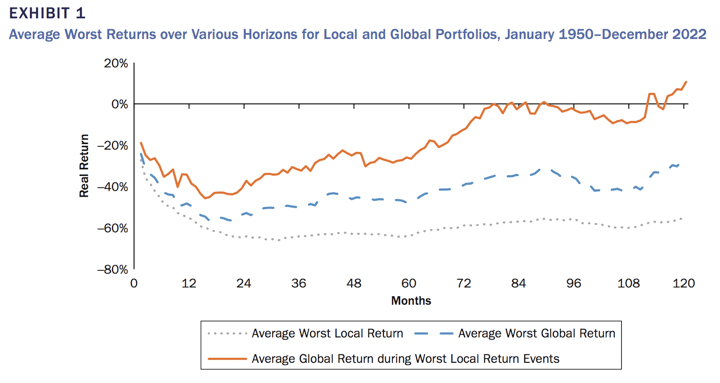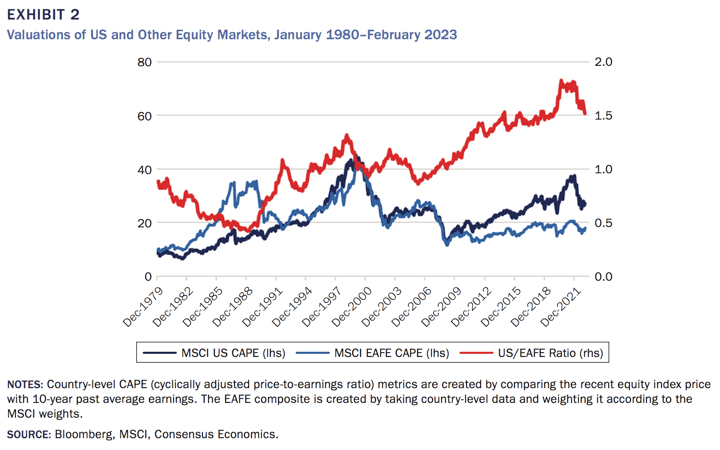If you own a target retirement fund, you probably own a decent chunk of international stocks. However, these days it’s harder to find people telling you to own international stocks when you build your own portfolio, mostly because of the outperformance of US stocks over non-US stocks for long time now. The article International Diversification – Still Not Crazy after All These Years does a good job of reminding us why owning some international stocks is still a good idea. Here’s the brief summary:
International diversification has hurt US-based investors for over 30 years, but the long-run case for it remains relevant. Both financial theory and common sense favor international diversification, which is buttressed by empirical evidence that is very supportive at longer horizons and for active strategies. Finally, it would be dangerous to extrapolate the post-1990 outperformance of US equities, as it mainly reflects rising relative valuations. If anything, the current richness of US equities may point to prospective underperformance.
For one, the diversification benefits in times of market crashes are still there… as long as you expand your time horizon. The major risk for a US-only portfolio is a prolonged recession in the US, while the rest of the world recovers more quickly. The “insurance” analogy still applies as historically there has definitely been a cushioning effect over time from spreading your bets.
Exhibit 1 shows that over short horizons, global portfolios (dashed) can suffer almost as much as an average local portfolio (dot- ted); but once you look out a couple years or so, global portfolios fare much better.

Exhibit 2 tracks the Shiller CAPE ratio (Cyclically-Adjusted Price/Earnings ratio) of US stocks and EAFE developed international stocks. The red line represents ratio between the US and EAFE valuations. Much of the historical outperformance of the US over EAFA stocks since 1990 was not earnings growth itself, but expansion of the P/E ratio (how much you pay for those earnings).

Will US stocks permanently maintain a P/E ratio that is 50% higher than international stocks? I have no idea, but it’s definitely not a sure thing. I let my portfolio asset allocation float with the market weightings (with a slight US tilt since I live here), so I don’t really worry about it because if US stocks keep growing faster than international stocks, then I’ll just gradually end up owning more US stocks while paying a sort of insurance premium hit for owning the international stocks. But if international stocks end up making even a minor improvement like a return to valuation ratios pre-2010, my portfolio can still benefit.
“The editorial content here is not provided by any of the companies mentioned, and has not been reviewed, approved or otherwise endorsed by any of these entities. Opinions expressed here are the author’s alone. This email may contain links through which we are compensated when you click on or are approved for offers.”
Why a Your Portfolio Should Contain (At Least Some) International Stocks from My Money Blog.
Copyright © 2004-2022 MyMoneyBlog.com. All Rights Reserved. Do not re-syndicate without permission.





